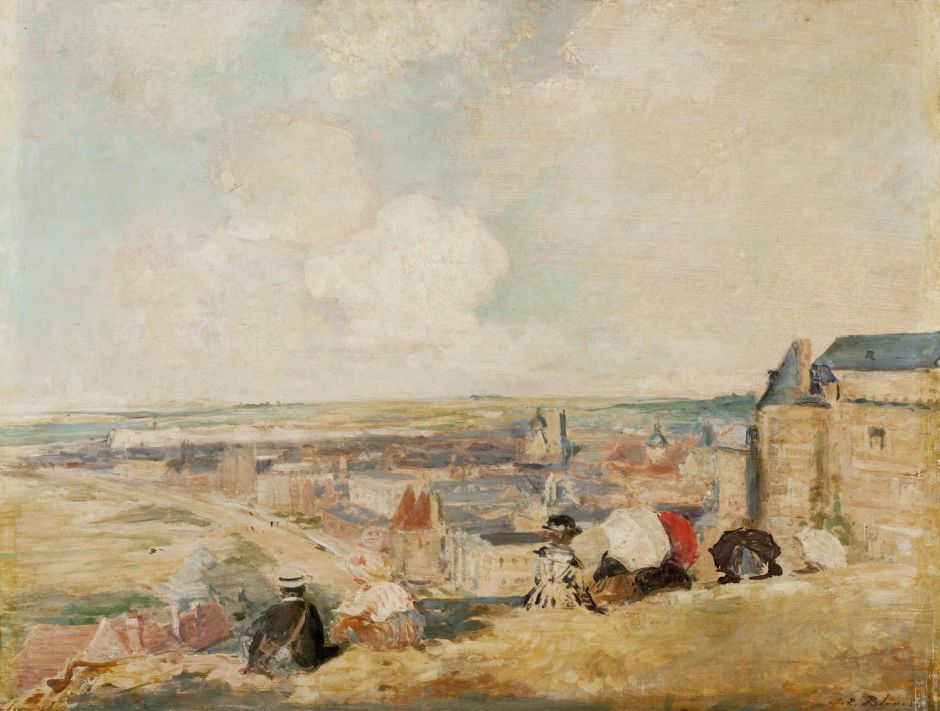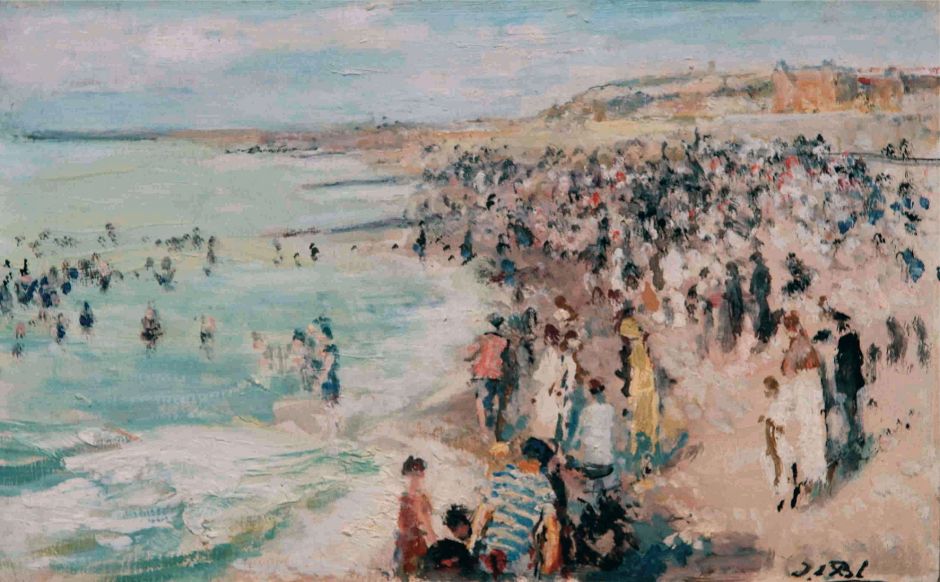If you’ve come across the paintings of Jacques-Émile Blanche (1861–1942), you’ll know of his portraits of famous figures around the end of the nineteenth and early twentieth centuries.

People like Henry James, whom he painted in very traditional style in 1908. What you may not realise is that Blanche was also an Impressionist. Not just a French Impressionist, either, but a British Impressionist too.
Blanche was largely self-taught, although he apparently had the benefit of a few lessons from Henri Gervex and Ferdinand Humbert. His father was a neurologist with a large and prosperous private clinic frequented by the rich and famous, who proved willing to sit for their specialist’s son. As his portrait business grew, so he started to visit London, from 1884 onwards, where the rich and famous flocked to his studio to sit for him to paint them. At his best, he could paint portraits as well as John Singer Sargent or James Tissot. Among his best-known are those of Charles Conder, the Australian Impressionist, and novelists James Joyce, Henry James (above), and Virginia Woolf.
In the summer, he stayed in the family house in Dieppe, where his circle included Walter Sickert and John Singer Sargent. When in Paris, he socialised with Edgar Degas, Paul Helleu and Giovanni Boldini.
Blanche was also an inveterate sketcher in oils, particularly during the summer when in Dieppe. This seems to have started in the mid-1880s, and probably followed the lead of Sickert.

Blanche accompanied Paul Helleu when he visited England in 1885, and took the opportunity for a short stay in Dieppe, to paint Dieppe Beach in front of the Casino (c 1886).

His undated View of Dieppe from the top of the Cliff was probably made around this time.

This undated view of La place du Puits Salé in Dieppe shows the same location as that painted by Sickert in his 1890 painting Café des Tribunaux, Dieppe, below. This makes me wonder whether the pair painted together.


In about 1893, Blanche painted Dieppe Beach in August.
In 1905, Blanche moved his studio to London for a period of six years, and took to painting views of the city. To help him in this, he used a vehicle as a mobile studio, in which he was able to both sketch and produce more finished paintings.

Among those is this view of Crystal Palace, Sydenham, London, which he painted in 1907. This massive glasshouse had been constructed in steel and glass for the Great Exhibition in London in 1851, when it was in Hyde Park. In 1854, it was dismantled and re-erected at Sydenham Hill in south London, which soon became known by its name. It was tragically destroyed by fire in 1936.

Blanche continued to paint Dieppe Beach (1910) most summers while he was living and working in London.

At about the same time, he painted this view of Ludgate Circus: Entrance to the City (November, Midday) (c 1910), looking down towards Saint Paul’s Cathedral.

He also made some painterly views of interiors, such as The Concert, from around 1910.

In 1913, he visited Rome, where he painted this Terrace of a Building in Rome in gouache.

But summer still meant it was time for the north coast, and paintings including Dieppe, the Beach, Stormy Morning (1926).

By the time that Blanche painted August Morning, Dieppe Beach in about 1934, he must have been in his early seventies.

Finally, this undated painting of a Wholesale Fish Market must have been made on the north coast of France, quite probably in Dieppe.
Blanche may have been French by birth, but his strong ties with other British Impressionists put him at the centre of their movement, rather than its parent in Paris. How strange that he should now be remembered only for his portraits, or perhaps from the people that he painted, not his paintings at all.

